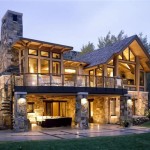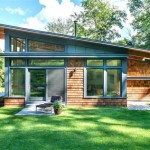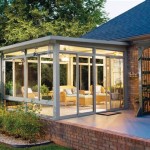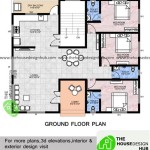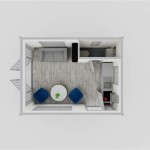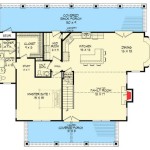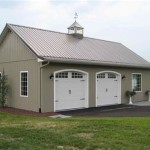Small Cabin Designs: Floor Plans for Cozy and Efficient Living
Small cabin designs are gaining popularity, offering a unique blend of simplicity, affordability, and connection with nature. These compact homes provide a minimalist lifestyle, encouraging intentional living and reducing environmental impact. The appeal of small cabins lies in their functional floor plans, which prioritize efficiency and maximize space utilization. This article explores the key considerations for designing small cabin floor plans, highlighting practical strategies to create comfortable and stylish living spaces within a limited footprint.
Open Floor Plans and Multi-Functional Spaces
One of the defining features of small cabin designs is the use of open floor plans. By eliminating unnecessary walls, these designs maximize visual space, creating a sense of openness and inviting natural light to flow freely throughout the cabin. This open concept allows for flexibility in furniture arrangement and can easily adapt to various needs and preferences. For instance, a single space can serve as a living, dining, and kitchen area. Multi-functional furniture, such as a sofa that converts into a bed or a coffee table with storage compartments, further enhances the versatility of open floor plans. This approach ensures that every square foot serves a purpose, maximizing functionality while maintaining a sense of spaciousness.
Another crucial aspect of small cabin floor plans is the incorporation of multi-functional spaces. Instead of dedicating separate rooms for specific activities, small cabin designers often create versatile areas that can be used for diverse purposes. A loft space, for example, can be used as a bedroom, a guest room, or an office. Similarly, a mudroom can serve as a storage space for outdoor gear, a laundry area, or a small pantry. By embracing multi-functionality, small cabin designs eliminate the need for expansive rooms, allowing for a smaller footprint while still providing all necessary amenities.
Optimizing Storage and Built-in Solutions
Storage is a critical aspect of small cabin design, as limited space requires creative solutions to prevent clutter and maintain a sense of order. Small cabin floor plans often incorporate efficient storage solutions, such as built-in shelves, cabinets, and drawers. These custom fittings seamlessly integrate into the cabin's structure, maximizing storage capacity while minimizing visual impact. Moreover, vertical storage solutions like wall-mounted shelves and hanging organizers effectively utilize unused vertical space. By strategically incorporating built-in storage and maximizing vertical space, small cabin designs ensure that possessions are neatly organized and easily accessible, minimizing clutter and fostering a serene living environment.
Beyond built-in solutions, small cabin designs often feature clever design elements that enhance storage functionality. For example, a bench with a built-in storage compartment can serve as both seating and a hidden storage space for blankets, pillows, or seasonal items. Similarly, sliding doors, instead of traditional hinged doors, can save precious space, particularly in smaller rooms. By prioritizing storage efficiency and implementing creative design solutions, small cabin floor plans ensure that even within a limited footprint, abundant storage space is available.
Utilizing Natural Light and Efficient Ventilation
Harnessing natural light is essential in small cabin designs to create a bright and inviting atmosphere. Large windows strategically placed throughout the cabin allow natural light to flood in, eliminating the need for excessive artificial lighting. This approach not only reduces energy consumption but also fosters a sense of connection with the surrounding landscape. Furthermore, skylights can be incorporated to introduce natural light into interior spaces that may lack direct window access. By maximizing natural light, small cabin designs create a cheerful and welcoming environment, promoting a sense of well-being.
Equally important is ensuring proper ventilation in small cabins. While compact living spaces can benefit from the cozy feel, they also require adequate ventilation to maintain a healthy and comfortable indoor environment. Floor plans often include strategically positioned windows, ensuring cross-ventilation and air circulation throughout the cabin. Additionally, incorporating exhaust fans in areas like the bathroom and kitchen helps remove moisture and odors, promoting a fresh and clean atmosphere. By prioritizing natural light and efficient ventilation, small cabin designs create a comfortable and healthy living environment, even within a limited footprint.

Rustic Vacation Homes Simple Small Cabin Plans Houseplans Blog Com

Small Cabin Designs With Loft Floor Plans

Small Cottage Floor Plan With Loft Designs House Plans Homes

Floorplan Image For Plan Small House Plans Floor Tiny

13 Best Small Cabin Plans With Cost To Build Craft Mart

Small Cabin Designs With Loft Floor Plans House Plan

Rustic Vacation Homes Simple Small Cabin Plans Houseplans Blog Com

16 X 24 Aspen Cabin Architectural Plans Small

Tiny House Plan Examples

Small Cottage Floor Plan With Loft Designs

